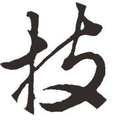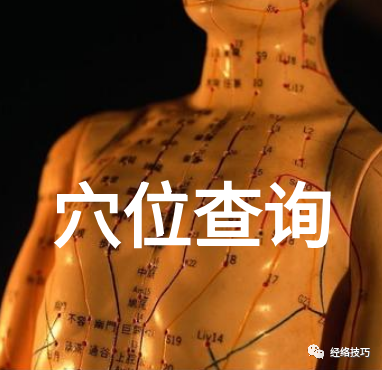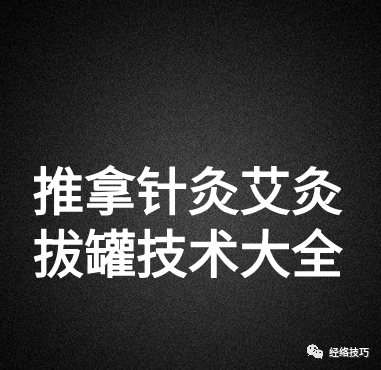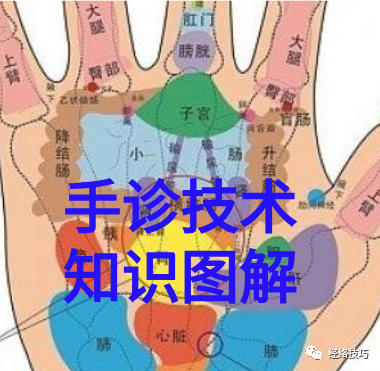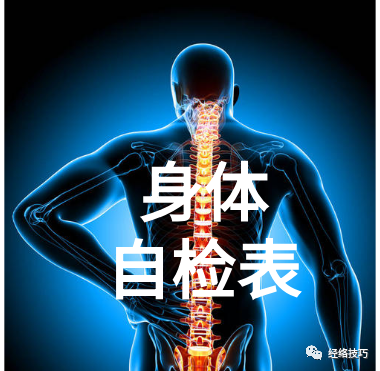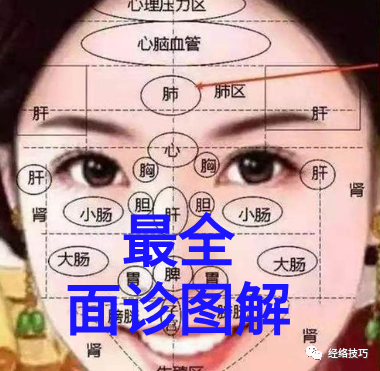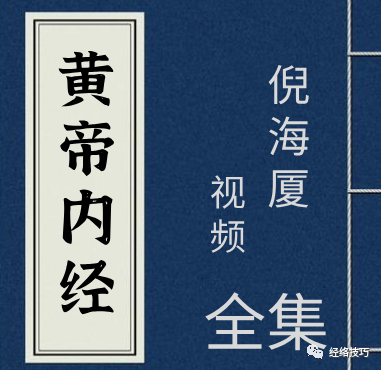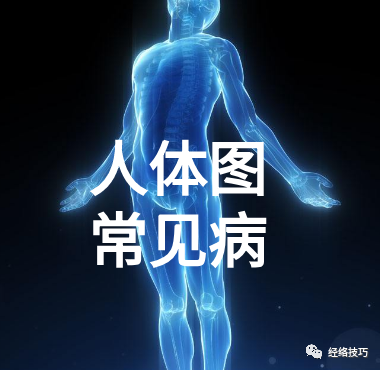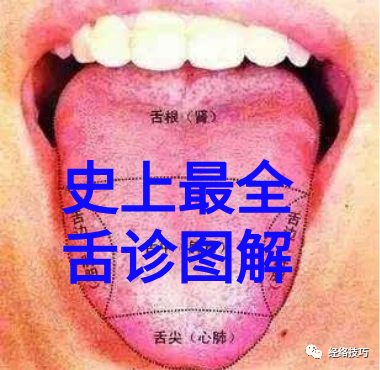
Click the image below to read ↓↓↓
|
|
|
|
|
|
|
|
|
|
—— The following is the main text ——
The Eight Principles of Diagnosis (Ba Gang Bian Zheng) is a comprehensive framework for various diagnostic methods in Traditional Chinese Medicine (TCM). Diagnosis involves analyzing and identifying the symptoms of diseases, which is a primary process and method for understanding and diagnosing illnesses. The term “辨” (bian) means to distinguish or analyze, while “证” (zheng) refers to the syndrome, which is a comprehensive manifestation of the disordered relationship between the body and the environment, as well as among the organs, meridians, qi, blood, and body fluids under the influence of pathogenic factors. Therefore, clarifying a specific syndrome summarizes the pathological conditions such as the stage of disease development, the location of the disease, the strength of the struggle between pathogenic and righteous qi, and the imbalance of yin and yang. The process of diagnosis is based on theories of organs, meridians, qi, blood, body fluids, and pathogenic factors, and involves synthesizing, summarizing, analyzing, reasoning, and judging the symptoms and signs collected through the four diagnostic methods: observation, listening, inquiry, and palpation, to understand the disease and make an accurate diagnosis.
Diagnosis and treatment are two crucial interrelated aspects of TCM’s principles, methods, formulas, and medicines in clinical practice. Diagnosis is the foundation for understanding the disease, while treatment is the application of corresponding therapeutic measures based on the diagnosis. Diagnosis serves as the premise and basis for treatment, while treatment is the objective and objective standard for verifying the correctness of the diagnosis.
“症” (zheng) refers to individual symptoms, which are recognized similarly in both TCM and Western medicine, such as headache, fever, cough, palpitations, nausea, etc.
“病” (bing) refers to the disease name. Among the disease names in TCM, only a few correspond to those in Western medicine, such as measles, diphtheria, tetanus, asthma, dysentery, and heat stroke, while most terms differ. Due to the different theoretical systems of TCM and Western medicine, their understanding of diseases varies. Western medicine’s understanding of diseases is based on human anatomy and pathophysiology, with clinical diagnosis relying on the patient’s subjective symptoms, physical examination, and laboratory tests. TCM, on the other hand, views diseases as results of imbalances in yin and yang, with clinical diagnosis primarily based on the patient’s symptoms and signs (such as tongue and pulse diagnosis), without necessarily identifying a disease name but rather clarifying the specific “证” (zheng).
“证” (zheng) is an abbreviation for evidence or syndrome, which is not merely a symptom or subjective feeling but a group of syndromes. It is also TCM’s diagnostic concept of disease. “证” represents a set of specific clinical manifestations (symptoms, signs, etc.) and encompasses a comprehensive concept that includes the cause of the disease, the location of the pathological changes, the nature of the changes, and the comparative strength of the pathogenic and righteous forces. “证” is derived from analyzing symptoms and signs and summarizing them into a concept that better explains the essence of the disease.
TCM diagnosis has developed through long-term clinical practice, employing various methods, primarily including the Eight Principles, etiology-based diagnosis, diagnosis based on qi, blood, essence, and body fluids, organ diagnosis, and diagnosis based on defensive qi, nutritive qi, and blood. Among these, the Eight Principles is the overarching framework for various diagnostic methods.
The Eight Principles of Diagnosis categorizes syndromes into eight types based on comprehensive analysis of the materials obtained through the four diagnostic methods, aiming to explore the nature of the disease, the location of the pathological changes, the severity of the disease, the strength of the body’s response, and the comparative strength of the pathogenic and righteous forces. These eight categories are yin, yang, exterior, interior, cold, heat, deficiency, and excess, which are fundamental methods of TCM diagnosis. They summarize the commonalities from various diagnostic methods and play a crucial role in simplifying complex disease presentations, allowing for a clearer understanding of the contradictions present in the disease process. This includes identifying whether the disease is located in the exterior or interior, whether it is cold or hot, whether it is deficient or excessive, and whether it is yin or yang, which embodies the basic spirit of the Eight Principles.
1. Exterior and Interior
Exterior and interior refer to the depth of the disease and the severity of the condition. Generally speaking, the skin, hair, and superficial meridians belong to the exterior; the organs, blood vessels, bone marrow, and internal meridians belong to the interior. Exterior syndromes indicate that the disease is superficial and mild, while interior syndromes indicate that the disease is deep and severe.
(1) Exterior Syndrome
Exterior syndrome refers to symptoms located superficially in the skin. Generally, this occurs when external pathogenic factors invade the body through the skin and nose, leading to a series of symptoms where the righteous qi (defensive qi) resists the pathogenic factors, often seen in the initial stages of externally contracted diseases. Exterior syndromes are characterized by sudden onset, short duration, superficial location, and mild severity. They are commonly seen in the early stages of external heat diseases, such as upper respiratory infections, acute infectious diseases, and other initial stages of infectious diseases.
Main symptoms: fever and chills (or aversion to wind), headache, thin white tongue coating, and floating pulse are the basic symptoms, often accompanied by soreness in the limbs and joints, nasal congestion, cough, and other symptoms. Due to the differentiation of external pathogenic factors into cold and heat, and the varying strengths of the body’s ability to resist these factors, exterior syndromes can be further divided into exterior cold, exterior heat, exterior deficiency, and exterior excess syndromes.
1. Exterior Cold Syndrome
Main symptoms: significant aversion to cold, mild fever, pronounced pain in the head and body, no sweating, clear nasal discharge, and no thirst. The tongue is pale red, with a thin white and moist coating, and the pulse is floating and tight.
Pathogenesis: Cold pathogenic factors are constrained in the skin or muscle layer, leading to a struggle between the righteous and pathogenic qi, resulting in aversion to cold and fever. The invasion of pathogenic qi into the superficial meridians causes stagnation of the defensive qi and blood, leading to soreness in the head and limbs. The pulse is floating due to the struggle between the righteous and pathogenic qi at the surface.
Treatment principle: Release the exterior with warm acrid herbs.
Common formula: Ma Huang Tang (Ephedra Decoction).
2. Exterior Heat Syndrome
Main symptoms: significant fever, mild aversion to cold, headache, sore throat, sweating, and thick yellow nasal discharge, with a preference for cold drinks. The tongue is slightly red, with a thin white coating that is not moist, and the pulse is floating and rapid.
Pathogenesis: The struggle between the righteous and pathogenic qi at the surface leads to fever and aversion to cold. Heat pathogenic factors invade the defensive layer, causing sweating to escape. Heat damages body fluids, leading to thirst. The presence of heat at the surface results in a floating and rapid pulse.
Treatment principle: Release the exterior with cool acrid herbs.
Common formula: Yin Qiao San (Honeysuckle and Forsythia Powder).
3. Exterior Deficiency Syndrome
Main symptoms: exterior symptoms with aversion to wind, sweating. The tongue is pale, with a thin white coating, and the pulse is floating and weak.
Pathogenesis: The patient has a weak constitution, and the defensive yang is not firm, leading to aversion to wind and sweating. The pulse is floating and weak.
Treatment principle: Harmonize the nutritive and defensive qi, release the exterior.
Common formula: Gui Zhi Tang (Cinnamon Twig Decoction).
4. Exterior Excess Syndrome
Main symptoms: fever, aversion to cold, body aches, and no sweating. The tongue is pale red, with a thin white coating, and the pulse is floating and strong.
Pathogenesis: The pathogenic factors are strong, and the righteous qi is not weakened. The pathogenic factors are constrained in the skin, and the righteous qi resists the pathogenic factors, leading to fever and aversion to cold without sweating. The pulse is floating and strong.
Treatment principle: Release the exterior with warm acrid herbs.
Common formula: Ma Huang Tang (Ephedra Decoction).
Distinguishing between exterior cold and exterior heat syndromes is based on the severity of aversion to cold and fever, as well as tongue and pulse characteristics. Exterior cold syndrome presents with significant aversion to cold and mild fever, while exterior heat syndrome presents with significant fever and mild aversion to cold. The tongue coating in exterior cold syndrome is thin, white, and moist, with a tight floating pulse, while in exterior heat syndrome, the tongue coating is thin, white, and not moist, with a floating and rapid pulse. Additionally, wind-cold pathogenic factors can transform into heat, and exterior cold syndrome can evolve into exterior heat syndrome as the external pathogenic factors invade deeper.
Distinguishing between exterior deficiency and exterior excess syndromes involves considering the patient’s constitution, with sweating and lack of fluid as the basis. Exterior excess syndrome is characterized by exterior symptoms without sweating, commonly seen in younger and stronger individuals, while exterior deficiency syndrome is characterized by exterior symptoms with sweating, often seen in older or chronically ill patients.
(2) Interior Syndrome
Interior syndrome, in contrast to exterior syndrome, refers to symptoms located deeper within the body (organs, qi, blood, bone marrow, etc.). The causes of interior syndromes can generally be categorized into three situations: first, the progression of an exterior syndrome where the exterior pathogenic factors have not resolved and have invaded the interior, affecting the organs; second, direct invasion of the interior by external pathogenic factors, such as abdominal cold or excessive consumption of cold foods leading to interior cold syndrome; third, internal injuries from emotional disturbances, overexertion, or dietary factors that directly impair organ function, leading to symptoms such as dizziness and pain in the liver, palpitations and shortness of breath in the heart, cough and wheezing in the lungs, abdominal distension and diarrhea in the spleen, and low back pain and urinary retention in the kidneys. Therefore, the clinical manifestations of interior syndromes are complex, and all symptoms that are not exterior syndromes belong to interior syndromes. In the context of externally contracted diseases, interior syndromes should be combined with etiology-based diagnosis and diagnosis based on defensive qi, nutritive qi, and blood, while in cases of internal injuries, organ diagnosis should be prioritized. Interior syndromes can be differentiated into interior cold, interior heat, interior deficiency, and interior excess (discussed in the context of cold-heat and deficiency-excess differentiation).
Distinguishing between exterior and interior syndromes is primarily based on the patient’s history, the nature of the symptoms, and changes in tongue and pulse. Generally, new or acute illnesses with a short duration are more likely to be exterior syndromes, while chronic or long-standing illnesses are often interior syndromes. Fever with aversion to cold indicates an exterior syndrome, while fever without aversion to cold or only cold without fever indicates an interior syndrome. The tongue coating in exterior syndromes often shows no changes or only slight redness at the edges, while interior syndromes often present with abnormal tongue coatings. A floating pulse indicates an exterior syndrome, while a deep pulse indicates an interior syndrome.
(3) Half Exterior Half Interior Syndrome
This syndrome occurs when the pathogenic factors are neither fully in the exterior nor have they entered the interior, presenting symptoms that are neither typical of exterior nor interior syndromes. Main symptoms include alternating chills and fever, chest and hypochondriac fullness, bitter mouth and dry throat, irritability, nausea, loss of appetite, and dizziness. The tongue tip is red, with a yellow-white coating, and the pulse is wiry.
Pathogenesis: The struggle between the righteous and pathogenic qi occurs in the half exterior half interior region, leading to alternating chills and fever. The pathogenic factors invade the half exterior half interior region, affecting the gallbladder meridian, resulting in chest and hypochondriac fullness and bitterness in the mouth. Heat in the gallbladder and disharmony between the liver and stomach lead to irritability, dizziness, nausea, and loss of appetite.
Treatment principle: Harmonize and resolve both exterior and interior.
Common formula: Xiao Chai Hu Tang (Minor Bupleurum Decoction).
(4) Simultaneous Exterior and Interior Disease (Mixed Exterior and Interior)
This refers to the simultaneous presence of exterior and interior syndromes at the same time, which can occur in three situations: first, at the onset of the disease, both exterior and interior syndromes are present; second, at the time of onset, only exterior symptoms are present, but later, as the pathogenic factors invade the interior, interior symptoms appear while exterior symptoms persist, also known as simultaneous exterior and interior disease; third, when the original disease has not resolved, and a new exterior disease is contracted, or when there is an original internal injury that is aggravated by external pathogenic factors, it also falls under simultaneous exterior and interior disease. The treatment principle is to resolve both exterior and interior simultaneously.
2. Cold and Heat
Cold and heat are two principles used to differentiate the nature of diseases, summarizing the conditions of yin and yang in the body. Generally, cold syndromes are manifestations of insufficient yang qi or the invasion of cold pathogenic factors, while heat syndromes are manifestations of excessive yang qi or the invasion of heat pathogenic factors. The saying goes, “Excess yang leads to heat, excess yin leads to cold; deficiency yang leads to cold, deficiency yin leads to heat.” Differentiating between cold and heat is the basis for using warming or cooling herbs in treatment, as the principle states, “Treat cold with heat, treat heat with cold.”
(1) Cold Syndrome
Cold syndrome is characterized by the invasion of cold pathogenic factors (such as cold or dampness) or by deficiency of yang qi, leading to manifestations of cold. It can be divided into exterior cold syndrome and interior cold syndrome, with exterior cold syndrome already discussed. Here, we refer to interior cold syndrome.
Main symptoms: aversion to cold, cold limbs, no thirst or preference for warm drinks, pale complexion, cough with white phlegm, abdominal pain relieved by warmth, loose stools, and clear, frequent urination. The tongue is pale, with a white coating, and the pulse is deep and slow.
Pathogenesis: Deficiency of yang and excess of yin lead to cold manifestations, resulting in cold limbs. Cold in the spleen and stomach leads to abdominal pain relieved by warmth, and weak yang qi results in a deep and slow pulse.
Treatment principle: Warm the middle and dispel cold.
Common formula: Fu Zi Li Zhong Tang (Aconite Decoction).
(2) Heat Syndrome
Heat syndrome is characterized by the invasion of heat pathogenic factors (such as wind, heat, or fire) or by excess yang and deficiency of yin, leading to manifestations of heat. It can be divided into exterior heat syndrome and interior heat syndrome, with exterior heat syndrome already discussed. Here, we refer to interior heat syndrome.
Main symptoms: fever, no aversion to cold, irritability, thirst with a preference for cold drinks, red face and eyes, cough with yellow, thick phlegm, abdominal pain with a preference for coolness, constipation, and short, red urination. The tongue is red, with a yellow coating, and the pulse is rapid.
Pathogenesis: Excessive yang heat leads to fever and a preference for coolness, heat damages body fluids leading to thirst, and short, red urination and constipation are due to heat accumulation. The pulse is rapid due to the presence of heat.
Treatment principle: Clear heat.
Common formula: Bai Hu Tang (White Tiger Decoction).
(3) Excess Heat vs. Deficiency Heat
Excess heat syndrome caused by the invasion of heat pathogenic factors differs from deficiency heat syndrome caused by the depletion of yin fluids or hyperactivity of bodily functions, with different clinical manifestations and treatment principles. See the table below.
Table 3-3 Differentiation between Excess Heat and Deficiency Heat
|
Excess Heat Syndrome |
Deficiency Heat Syndrome |
|
Acute onset, short duration |
Slow onset, long duration |
|
High fever, aversion to heat, profuse sweating |
Low fever, tidal fever, night sweats |
|
Delirium, severe cases may lead to madness |
Five hearts heat, insomnia with vivid dreams |
|
Thirst with a preference for drinking |
Dry mouth, but little drinking |
|
Cough with yellow, thick phlegm, purulent phlegm, or hemoptysis |
Little phlegm, sticky phlegm, or phlegm with blood streaks |
|
Constipation, short, red urination |
Small volume of stool, yellow, scanty urination |
|
Red face and eyes |
Flushed cheeks |
|
Red tongue, thick yellow coating |
Red tongue, little or no coating |
|
Rapid pulse |
Thin, rapid pulse |
|
Heat pathogenic factors are intense |
Yin fluids are depleted, leading to deficiency heat |
|
Often caused by heat pathogenic factors (e.g., infection) |
Often caused by hyperactivity of bodily functions |
|
Treatment involves clearing heat and draining fire |
Treatment involves nourishing yin and clearing heat |
(4) True Cold vs. False Heat
In critical stages of disease development, one may observe phenomena such as “true cold appearing as heat” or “true heat appearing as cold.” Clinically, a condition that is essentially a heat syndrome but presents with cold symptoms is termed “true heat, false cold,” while a condition that is essentially a cold syndrome but presents with heat symptoms is termed “true cold, false heat.” This situation often indicates a severe disease. If the essence is not grasped, one may be misled by the false appearance, leading to misdiagnosis and mistreatment.
1. “True Cold, False Heat”: For example, in patients with chronic wasting diseases, one may observe symptoms such as fever, flushed cheeks, restlessness, black tongue coating, and a floating pulse. On the surface, this appears to be a heat syndrome, but the patient prefers warmth, appears lethargic and indifferent, curls up while lying down, has a pale tongue, a black and moist coating, and a floating but weak pulse. This indicates that the internal yin is excessive, constraining the yang externally, thus the essence remains a cold syndrome, hence termed “true cold, false heat.” Treatment should focus on warming the interior and reviving yang.
2. “True Heat, False Cold”: This refers to a true heat condition presenting with false cold symptoms. For instance, in severe heat-related illnesses, one may observe a patient appearing indifferent, lethargic, with cold hands and feet, and a deep, thin pulse. On the surface, this appears to be a cold syndrome, but there are also signs of heat in the mouth and nose, burning sensations in the chest and abdomen, thirst with a preference for cold drinks, constipation, and short, red urination. The tongue is red, with a yellow, dry coating, and the pulse, although deep and thin, is rapid and strong. This indicates that internal yang heat is constrained and cannot express outwardly, thus the essence is a heat syndrome, hence termed “true heat, false cold.” Treatment should focus on clearing internal heat and promoting yang qi.
In general, the manifestations of cold and heat are superficial, while the internal cold and heat represent the essence of the condition.
When differentiating between cold and heat syndromes, one should not rely solely on a single symptom or sign but should observe the overall presentation of the disease, particularly the aspects of cold and heat, thirst or lack of thirst, complexion, temperature of the limbs, urination, tongue appearance, and pulse characteristics. For instance, aversion to cold and preference for warmth indicates cold, while fever and preference for coolness indicate heat; no thirst indicates cold, while thirst with a preference for drinking indicates heat; a pale complexion indicates cold, while a red complexion indicates heat; cold hands and feet indicate cold, while warm limbs indicate heat; clear, frequent urination and loose stools indicate cold, while short, red urination and constipation indicate heat; a pale tongue with a white coating indicates cold, while a red tongue with a yellow coating indicates heat, etc. From the comparison of cold and heat syndromes, it can be seen that cold syndromes are associated with excess yin and often coexist with yang deficiency, while heat syndromes are associated with excess yang and often present with signs of yin fluid depletion.
3. Deficiency and Excess
Deficiency and excess are two principles used to differentiate the strength of the body’s righteous qi and the severity of pathogenic factors. Generally, deficiency refers to insufficient righteous qi, and deficiency syndromes are manifestations of this insufficiency, while excess refers to the overabundance of pathogenic factors, and excess syndromes are manifestations of this overabundance. The Suwen states, “When pathogenic factors are strong, it is excess; when vital energy is depleted, it is deficiency.” From the perspective of the comparative strength of righteous and pathogenic forces, deficiency syndromes indicate insufficient righteous qi, but the pathogenic factors are not strong; excess syndromes indicate strong pathogenic factors, but the righteous qi is not yet weakened, reflecting a fierce struggle between the two. Differentiating between deficiency and excess is the basis for deciding whether to tonify the righteous qi (nourish deficiency) or drain the pathogenic factors (drain excess), hence the principle states, “Nourish the deficient, drain the excess.”
(1) Deficiency Syndrome
Deficiency syndromes can arise from a weak constitution (either congenital or acquired), prolonged illness damaging the righteous qi, excessive blood loss, loss of essence, profuse sweating, or invasion of external pathogenic factors damaging the righteous qi, leading to “vital energy being depleted, resulting in deficiency.”
Main symptoms: pale or sallow complexion, lethargy, fatigue, palpitations, shortness of breath, cold limbs, or five hearts heat, spontaneous sweating, night sweats, loose stools, frequent urination, pale tongue with little or no coating, and weak pulse.
Clinically, deficiency syndromes can be categorized into qi deficiency, blood deficiency, yin deficiency, and yang deficiency, with organ-specific deficiencies (such as lung qi deficiency, heart blood deficiency, liver yin deficiency, spleen qi deficiency, kidney yang deficiency, etc.) discussed in organ diagnosis.
Table 3-4 Differentiation between Qi Deficiency, Blood Deficiency, Yin Deficiency, and Yang Deficiency
| Category | Common Symptoms | Distinct Symptoms | Treatment Principle | Common Formulas |
| Qi Deficiency | Pale or sallow complexion, lethargy, fatigue, low voice, spontaneous sweating, poor appetite, pale and swollen tongue, weak pulse | Shortness of breath, fatigue worsens with exertion, etc. | Tonify qi | Si Jun Zi Tang (Four Gentlemen Decoction) etc. |
| Yang Deficiency | Aversion to cold, cold limbs, clear, frequent urination, loose stools, slow pulse | Tonify yang | Shen Qi Wan (Kidney Qi Pill), Ren Shen Rong Wan (Ginseng and Deer Antler Pill) etc. | |
| Blood Deficiency | Weight loss, dizziness, blurred vision, insomnia, palpitations, thin pulse | Pale complexion, numbness in hands and feet, pale lips and nails, pale tongue, weak pulse | Nourish blood | Si Wu Tang (Four Substance Decoction) etc. |
| Yin Deficiency | Low fever or tidal fever, flushed cheeks, five hearts heat, dry mouth, dry throat, night sweats, red tongue, thin or cracked tongue, little or no coating, rapid pulse | Nourish yin | Liang Di Wan (Six Flavor Rehmannia Pill) etc. |
From the above table, it can be seen that qi deficiency and yang deficiency both indicate insufficient yang qi, thus presenting similar clinical manifestations, including pale complexion, fatigue, spontaneous sweating, etc. However, they differ in that qi deficiency does not present with cold symptoms, while yang deficiency does present with cold symptoms—aversion to cold, cold limbs, and slow pulse. Blood deficiency and yin deficiency both indicate insufficient yin fluids, thus presenting similar clinical manifestations, including weight loss, dizziness, palpitations, and insomnia. However, they differ in that blood deficiency does not present with heat symptoms, while yin deficiency presents with heat symptoms due to the inability of yin fluids to restrain yang qi, thus leading to manifestations of heat—low fever or tidal fever, dry mouth, and dry throat.
(2) Excess Syndrome
Excess syndromes arise from a robust constitution of the patient, where external pathogenic factors invade acutely, or from dysfunction of the organs leading to the accumulation of pathological products such as qi stagnation, blood stasis, phlegm, dampness, parasites, or food stagnation.
Clinical manifestations vary based on the nature of the pathogenic factors and the organs affected, characterized by strong pathogenic factors and weak righteous qi, with a fierce struggle between the two. Common symptoms include high fever, flushed face, irritability, delirium, loud voice, abdominal distension and pain that resists pressure, excessive phlegm, constipation, difficulty urinating, or the presence of blood stasis, edema, food stagnation, or parasites, with thick, greasy tongue coating and a strong pulse.
Treatment principle: Drain excess and attack the pathogenic factors is the main method for treating excess syndromes, hence the principle states, “If it is excess, drain it.” However, different methods such as clearing heat, promoting bowel movements, draining dampness, dispelling phlegm, regulating qi, invigorating blood, resolving stasis, and expelling parasites will be discussed in relevant chapters.
Distinguishing between deficiency and excess syndromes can be considered from several aspects: new or acute illnesses with a short duration are often excess syndromes, while chronic or long-standing illnesses are often deficiency syndromes; external pathogenic factors often indicate excess syndromes, while internal injuries often indicate deficiency syndromes; younger and stronger individuals are more likely to present with excess syndromes, while older and weaker individuals are more likely to present with deficiency syndromes; and clinical symptoms and signs can be referenced in the table below.
Table 3-5 Differentiation between Deficiency and Excess Syndromes
| Symptoms and Signs | Treatment Principle | ||||||
| Deficiency Syndrome | Pale, sallow, or dull complexion | Fatigue | Low voice | Discomfort relieved by pressure | Pale tongue with white coating or little coating | Weak pulse | Tonify deficiency |
| Excess Syndrome | Flushed face | Irritability and delirium | Loud voice | Severe pain that resists pressure | Red tongue with thick, greasy coating | Strong pulse | Drain excess |
4. Yin and Yang
Yin and yang are two principles used to differentiate the nature of diseases, serving as the overarching framework for the Eight Principles, summarizing the concepts of exterior and interior, cold and heat, deficiency and excess. The “Liu Jing” states, “In human diseases, there must be a basis, either rooted in yin or in yang. Although the manifestations of disease are numerous, they ultimately fall into two categories: yin and yang,” indicating that although symptoms may be complex and varied, they can be categorized into yin and yang, and thus, the key to diagnosing diseases must first clarify whether they belong to yin or yang. Generally, exterior, excess, and heat syndromes belong to yang syndromes, while interior, deficiency, and cold syndromes belong to yin syndromes. The clinical manifestations, causes, mechanisms, and treatments of yin and yang syndromes have been discussed in the context of exterior and interior, cold and heat, and deficiency and excess.
(1) Yin Syndrome
Yin syndrome is characterized by deficiency of yang qi and excess of yin, generally presenting with cold symptoms, such as aversion to cold, absence of fever, cold limbs, lethargy, and a slow, weak pulse. This syndrome arises from the low function of the organs and a weakened response of the body, often seen in older or chronically ill patients, presenting a picture of deficiency and cold.
(2) Yang Syndrome
Yang syndrome is characterized by excess of yang qi and intact righteous qi, generally presenting with heat symptoms, such as fever, aversion to heat, warm limbs, irritability, thirst, and a rapid, strong pulse. This syndrome arises from the hyperfunction of the organs and is often seen in robust individuals, presenting a picture of excess heat.
The main clinical manifestations of yin and yang syndromes can be referenced in the table below:
Table 3-6 Differentiation between Yin and Yang Syndromes
| Syndrome
Four Diagnostic Methods |
Yin Syndrome | Yang Syndrome |
| Observation | Pale or dull complexion, heavy body, curled up posture, lethargy, pale and swollen tongue, white and moist tongue coating | Flushed or bright complexion, restlessness, dry and cracked lips, red tongue, thick coating, possibly cracked or black with prickles |
| Listening | Low voice, quiet and few words, weak breathing, shortness of breath | Loud voice, restless and talkative, possibly delirious, coarse breathing, wheezing |
| Inquiry | Reduced appetite, preference for warmth, no thirst, bland taste, loose stools, clear, frequent urination or scanty urination | Dry mouth and bitter taste, preference for coolness, thirst, constipation, short, red urination |
| Palpation | Pain relieved by pressure, cold body, slow, thin, rough, weak pulse | Pain that resists pressure, warm body, floating, rapid, strong pulse |
(3) Loss of Yin and Loss of Yang
Loss of yin and loss of yang are two dangerous syndromes that can occur during the disease process, often seen in cases of high fever, persistent sweating, severe vomiting and diarrhea, or excessive blood loss, leading to rapid loss of yin fluids or yang qi, commonly seen in shock patients. Although loss of yin and loss of yang fall under the category of deficiency syndromes, they are distinguished from general deficiency syndromes due to their special and critical nature.
The clinical manifestations of loss of yin and loss of yang, in addition to various critical symptoms of the primary disease, often present with varying degrees of sweating. However, the sweating in loss of yin is hot and sticky, accompanied by skin heat, warm hands and feet, thirst with a preference for cold drinks, a red tongue, and a rapid, weak pulse. In contrast, the sweating in loss of yang is profuse and cool, accompanied by aversion to cold, lethargy, cold limbs, and a weak pulse. Since yin and yang are interdependent, depletion of yin fluids leads to the dispersion of yang qi, while depletion of yang qi leads to the inability of yin fluids to generate, thus the clinical manifestations of loss of yin and loss of yang are difficult to separate, and they can rapidly transform into one another, with differences in priority and sequence.
The treatment for loss of yin focuses on nourishing qi, restraining yin, and generating fluids to prevent loss of yang, commonly using formulas such as Sheng Mai San (Generate the Pulse Powder); the treatment for loss of yang focuses on nourishing qi, stabilizing the loss, and reviving yang, commonly using formulas such as Du Shen Tang (Ginseng Decoction) and Shen Fu Tang (Ginseng and Aconite Decoction).
The differentiation of loss of yin and loss of yang can be referenced in the table below.
Table 3-7 Differentiation between Loss of Yin and Loss of Yang
| Sweating | Limbs | Other Symptoms | Tongue | Pulse | Treatment Principle | |
| Loss of Yin | Hot, salty, and sticky sweat | Warm and aversion to heat | Flushed complexion, whole body heat, restlessness, confusion, shortness of breath, thirst with a preference for cold drinks | Red and dry tongue | Thin, rapid pulse, weak or large pulse | Nourish qi, restrain yin
Generate fluids |
| Loss of Yang | Cool, bland, and non-sticky sweat | Cold limbs and aversion to cold | Pale complexion, whole body cold, indifference, confusion, weak pulse, no thirst or preference for warm drinks | Pale, smooth tongue | Weak or floating pulse | Nourish qi, stabilize the loss
Revive yang |
5. Interrelationships among the Eight Principles and the Application of Eight Principles Diagnosis
The distinctions among the exterior and interior, cold and heat, deficiency and excess, and yin and yang are not simple, isolated, or static, but rather complex, interrelated, and capable of transformation. In summary, there exists a relationship of “coexistence,” “mixing,” and “transformation” among the Eight Principles.
(1) Coexistence Relationship
“Coexistence” refers to the simultaneous appearance of symptoms from two or more principles. For example, in the early stages of externally contracted heat diseases, one may observe exterior symptoms, but further differentiation is needed to determine whether there is coexisting cold or heat, thus leading to the classification of exterior cold or exterior heat syndromes. In cases of prolonged illness, deficiency syndromes may also require further differentiation to determine whether they are deficiency cold or deficiency heat syndromes. The appearance of coexisting symptoms should not be treated equally; rather, there is a primary and secondary relationship. For instance, both exterior cold and exterior heat syndromes are primarily exterior syndromes, with cold or heat being secondary to the exterior syndrome, thus treatment should primarily focus on releasing the exterior, using either warm acrid herbs or cool acrid herbs accordingly. Similarly, deficiency cold and deficiency heat syndromes are primarily deficiency syndromes, with cold or heat being secondary, thus treatment should primarily focus on tonifying deficiency, using either warming or nourishing methods. In cases of coexisting exterior and interior syndromes, the primary syndrome should be determined based on the specific condition.
(2) Mixing Relationship
“Mixing” refers to the simultaneous presence of opposing symptoms from two principles, such as cold-heat mixing, deficiency-excess mixing, or exterior-interior mixing (commonly referred to as simultaneous exterior and interior disease). Additionally, during the progression of a disease, false appearances may arise, such as true heat appearing as cold or true cold appearing as heat. Therefore, during the diagnostic process, careful observation and comprehensive analysis are essential to discern the truth from the false, grasp the essence, and avoid misdiagnosis and mistreatment, which could delay treatment.
(3) Transformation Relationship
“Transformation” refers to the phenomenon where symptoms of one principle transform into those of its opposite. The relationships between exterior and interior, cold and heat, deficiency and excess, and yin and yang are not only oppositional but can also transform into one another under certain conditions. For example, exterior cold symptoms such as aversion to cold and fever may develop into interior heat symptoms if the disease progresses or if treatment is inadequate. Similarly, excess syndromes may transform into deficiency syndromes due to misdiagnosis or inadequate treatment, leading to prolonged illness, where the pathogenic factors gradually diminish but the righteous qi is also damaged, resulting in a gradual transformation into deficiency syndromes. Conversely, deficiency syndromes may lead to the accumulation of phlegm, dampness, qi stagnation, or blood stasis, resulting in various excess syndromes. Transformation occurs under specific conditions, and during diagnosis, it is crucial to continuously assess changes in the disease mechanism, diagnose and treat promptly to prevent the disease from worsening and to promote recovery.
When applying the Eight Principles of Diagnosis, one should first differentiate between exterior and interior to determine the location of the disease; then differentiate between cold and heat, deficiency and excess, to understand the nature of the disease and the comparative strength of the righteous and pathogenic forces; finally, one can use yin and yang for a comprehensive summary.
Conclusion
The Eight Principles of Diagnosis is a method for diagnosing diseases by summarizing and analyzing them from the perspectives of exterior and interior, cold and heat, deficiency and excess, and yin and yang. Although it should be combined with etiology-based diagnosis and diagnosis based on defensive qi, nutritive qi, and blood for a more comprehensive diagnosis, it serves as the foundation for various diagnostic methods, simplifying complex presentations and providing a clear framework.
The Eight Principles are not fixed or isolated but can transform under certain conditions; exterior syndromes can progress to interior syndromes as the disease worsens, while interior syndromes can resolve as the disease improves. Heat syndromes can transform into cold syndromes, and excess syndromes can transform into deficiency syndromes, often due to the righteous qi gradually recovering. Conversely, cold syndromes can transform into heat syndromes, and deficiency syndromes can transform into excess syndromes, often due to the righteous qi being unable to overcome the pathogenic factors.
Although the Eight Principles have distinct manifestations, they are rarely purely isolated; rather, they exist in complex relationships of “coexistence” and “mixing,” and may sometimes present as “false appearances.” Therefore, during the diagnostic process, it is essential to conduct thorough investigations, think critically, and grasp the essence through the phenomena, ensuring accurate analysis and diagnosis for appropriate treatment.
⊙ Note:Content is for the purpose of popularizing TCM knowledge or for learning reference. Please consult a physician for guidance. This platform does not bear any responsibility for any consequences arising from this content! The content is sourced from the internet; please contact us for removal if there are any infringements.Exciting content continues tomorrow at 9 PM……
Like and share to promote health together!
